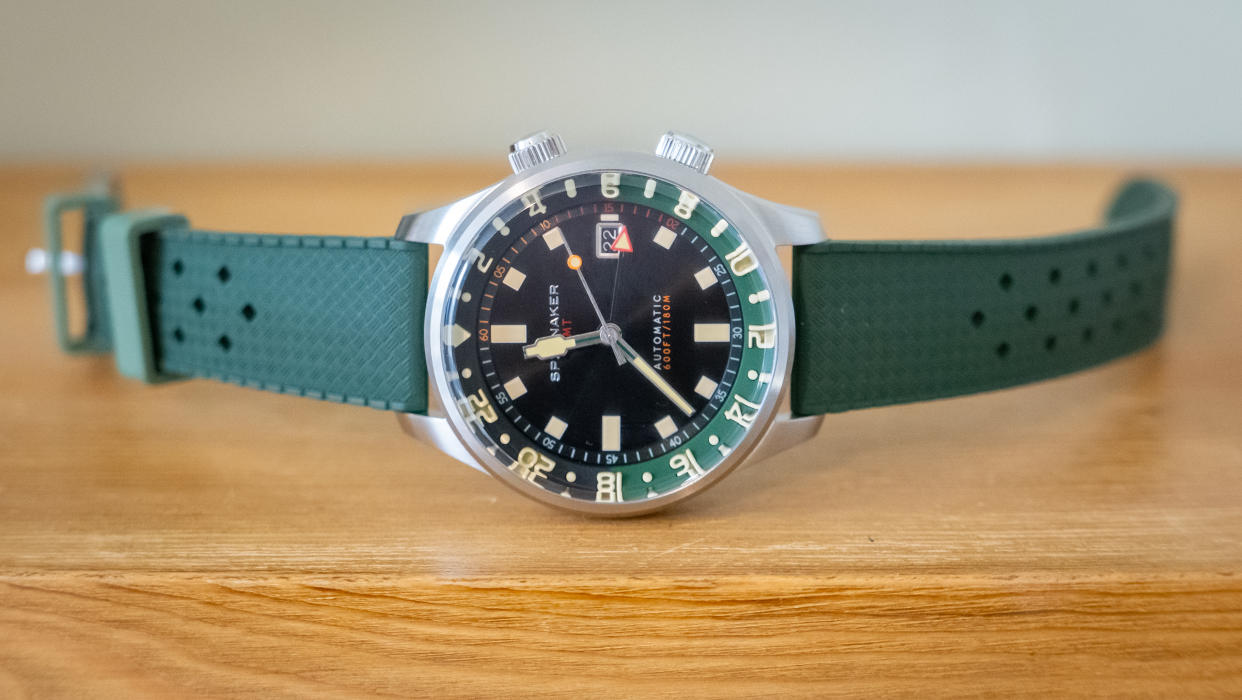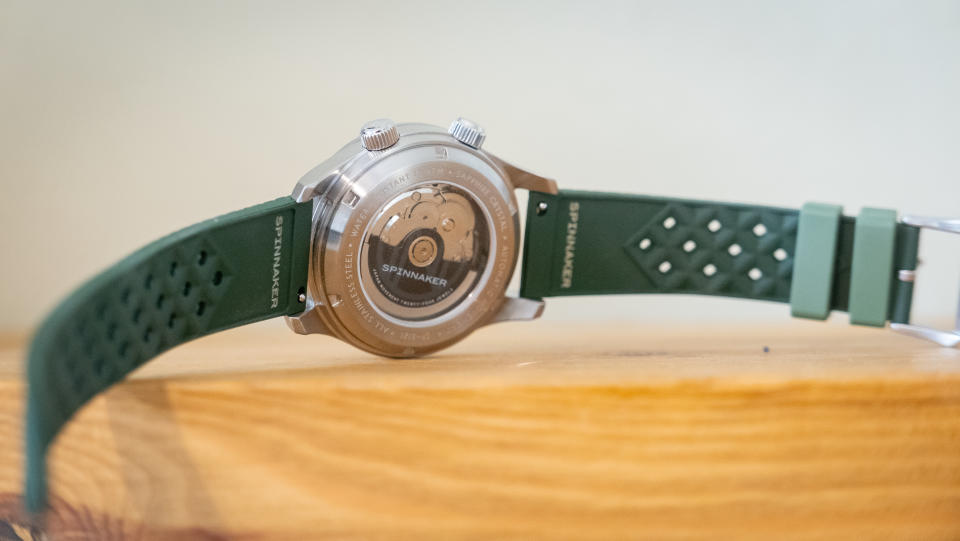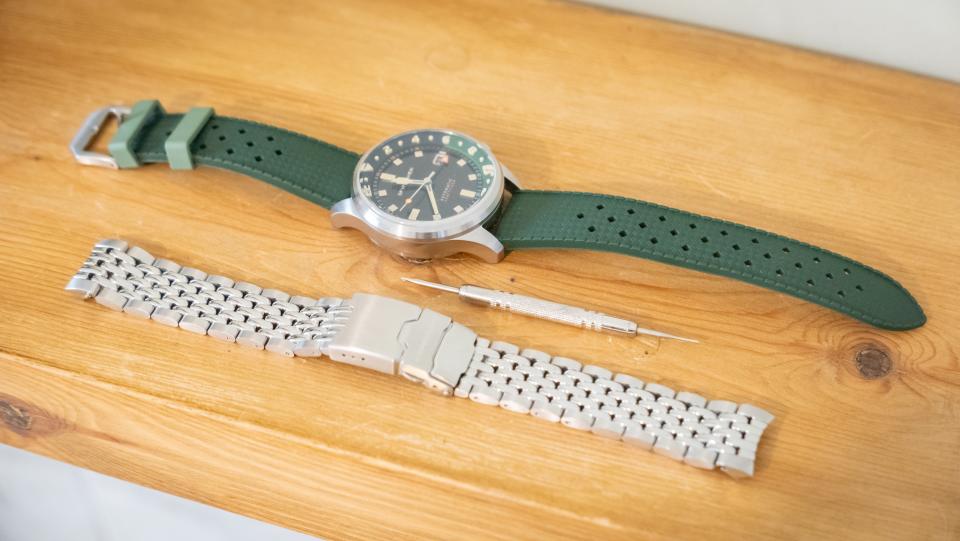A Week on the Wrist with the Spinnaker Bradner GMT Automatic: three time zones on one dial

To paraphrase Justin Timberlake’s Sean Parker talking to Mark Zuckeberg in The Social Network, 'one time zone isn’t cool'. You know what’s cool? Two time zones.
That’s the premise of a GMT movement, which Spinnaker has added to its Bradner to create the new Bradner GMT Automatic. But wait, there’s more. Because the watch also has a bidirectional rotating 24-hour bezel, it’s actually possible to see three time zones at once. Globe-trotting business people need never adjust their watch again.
Available to buy from 29th March and priced at £490 ($490, because that’s just the way these days), the Bradner GMT Automatic is available in six colourways. I’ve been using the ‘gravel black’ model for the past few days and here’s how I got on.
What is the Spinnaker Bradner GMT Automatic like to wear?

All six versions of Bradner GMT Automatic come with a stainless steel bracelet and a rubber strap in a complimentary colour way. I’m not a huge fan of the rice-style links of the bracelet, so I swapped it for the green alternative, which I think makes for a fantastic look. The strap nicely matches the daytime half of the 24-hour bezel, while also working well with the black of the dial and the stainless steel case. It’s a watch with purpose.
The strap is perfectly comfortable and, while fairly large by today’s shrinking standards, the 42mm case still worked well on my smaller wrist. It’s a watch that’s likely to protrude from your sleeve rather than tuck under it, but the smart aesthetics meant I was happy to show it off.
My only complaint is how the strap loops are a much lighter green than the strap itself, which to my eyes makes them feel like they don’t belong. Instead of adding a pop of colour, I think they take away from what is otherwise a nicely cohesive design, especially since the lighter shade isn’t used elsewhere.

Being a GMT, the watch shows the time conventionally with hour and minute hands, but also has a second hour hand that moves at half the speed, completing one lap of the dial every 24 hours. Traditionally the secondary hand is always set to point at GMT, but since I’m in London, that would show the same time as the main hour hand. This would work well when travelling, so at a glance, the GMT hand tells the time back home, but because I haven’t taken the Spinnaker Bradner abroad, I set the GMT hand to show the time in New York.
Then, because the bezel rotates (with a lovely, smooth movement, it must be said), you can use this to see a third time zone. It takes a bit of practice to quickly read all three – and to know how far to turn the bezel to get to that third time zone – but I like how Spinnaker has really thought about this and made clever use of a GMT dial and rotating bezel.

I really like the look of the bezel; how its raised numbers sit beneath the sapphire crystal and how it’s controlled by a second crown sprouting from the 2 o’clock position. The main crown is at 4 o’clock and is used to adjust the main time, as well as the GMT hand and the date complication.
Turn the watch around and you’re greeted by a sapphire exhibition case back showing the Japanese automatic movement within. I think being able to peek at an automatic movement is a wonderful thing for a sub-£500 watch, and makes the Bradner GMT feel like good value. Also welcome is the 180 metres of water resistance.
Some wearers might not like how the raised edges of the sapphire crystal cause the 24 hour markers of the bezel to distort when viewed at an angle. But if anything I think this adds a bit of intrigue to the watch, while also lending it a vintage feel.
Is the Spinnaker Bradner GMT Automatic worth the money?

Yes, I would say it is. It manages to squeeze under the £500/$500 barrier, yet packs an automatic GMT movement, sapphire on the front and rear, great build quality, two straps and the ability to tell three time zones at once, plus the date. The third time zone might not be for everyone, but there’s no denying the utility of a GMT hand or second time zone, especially for frequent flyers who want to keep an eye on the time back home.
